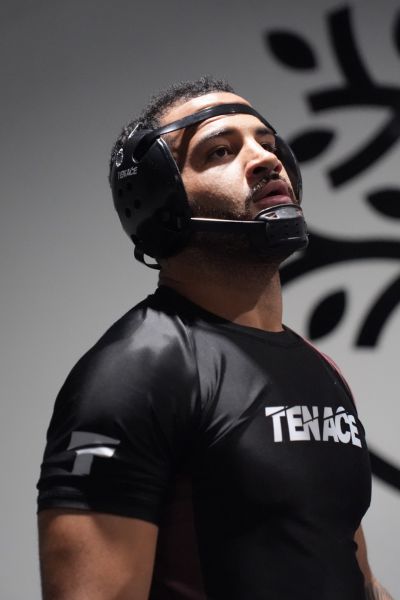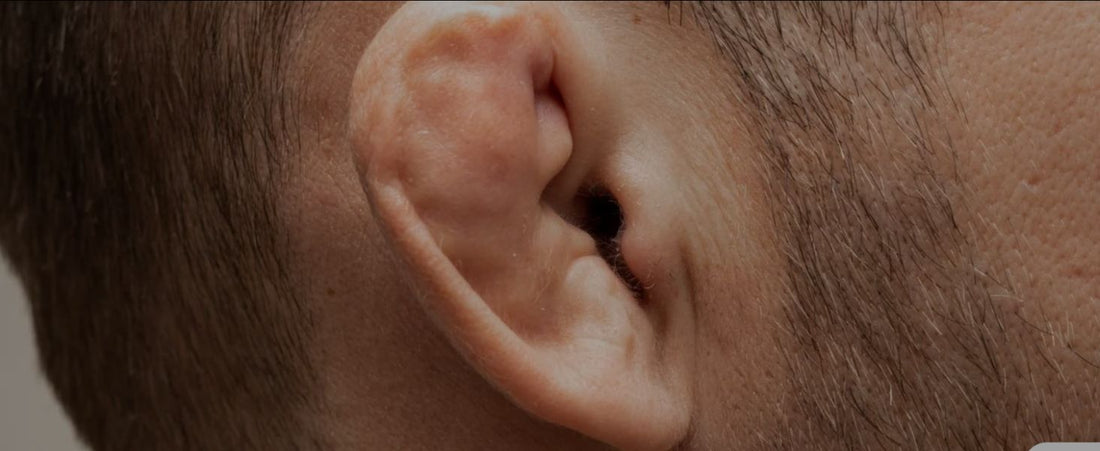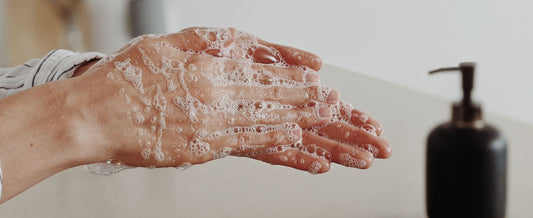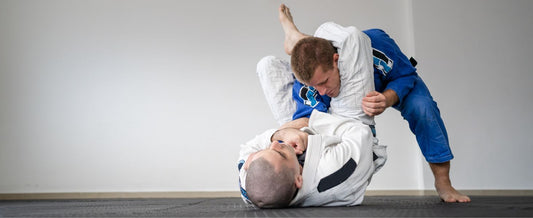- If I have flexible ears, I won't get cauliflower ears.
- A symbol of pride or an unnecessary risk? What happens if you don't protect them?
- Why don't professionals always wear earmuffs?
- Should you wear earmuffs every time you workout?
- Is cauliflower ear more common in BJJ or No-Gi Grappling?
- How does cauliflower ear affect your performance in competitions?
- Which fighting style is more at risk: passers or guards?
- Do you want to train stronger and safer?

These blogs may also interest you:
- Why use earmuffs in martial arts? – Tenace
- Customizing Your Earmuffs – Tenace
- Ultimate Guide to Choosing Protective Gear for Sparring: – Tenace
Do you know what cauliflower ears are? Those puffy ears that Jiu-jitsu or Grappling practitioners have? I'll tell you what... not ALL practitioners have them. And you've probably noticed something curious: some people on the mat wear their cauliflower ears as a badge of honor, while others go to great lengths to prevent them. But what does it really mean to have them? Are they a symbol of pride or an unnecessary risk?
We're going to answer these questions and others that have surely crossed your mind if you're worried about how your ears will be after training... and we'll tell you how to protect them!
1. If I have floppy ears, I won't get cauliflower ears...
In sports like BJJ and grappling, these injuries occur when the ears get caught in a kimono, receive pressure during a takedown, or constantly rub against the mat or the opponent's body. If not treated quickly (such as by properly draining them), the blood solidifies, leaving the ears with that swollen, hardened appearance and a texture similar to... yes, a cauliflower.
Having more "floppy" ears doesn't prevent cauliflower ear . The flexibility of the skin or cartilage isn't a factor that prevents this type of injury. Cauliflower ear occurs when direct trauma or repeated friction to the ear causes the cartilage to separate from the skin and blood to accumulate between the two layers.
So what can you actually do to prevent them ? Here are the best practices:
✅ The best prevention is using earmuffs
The most effective way is to use specialized ear guards for BJJ, Grappling, or MMA during training. This drastically reduces the direct impact and friction that cause cartilage inflammation.
Even if you can't wear them in competitions, training with them protects your ears during intense sessions. Our Tenace earmuffs are designed to be lightweight, comfortable, and secure.
✅ Quickly treats any swelling
If you notice your ear is swollen or tender after a workout:
- Apply ice immediately for 10-15 minutes to reduce inflammation.
- Avoid continuing to train until the pain subsides.
✅ Drain the ear in time
If a hematoma has already formed (that feeling of the ear being "full" or swollen):
- Consult a doctor or experienced trainer to drain the fluid as soon as possible.
- Allowing the liquid to solidify causes permanent deformity.
✅ Defend your head more
If you feel like your ears are constantly hitting the kimono, the mat, or your training partner's body, adjust your technique :
- Use your hands to block grips around your head.
- Learn to defend your head better, especially if you work a lot in "passing" positions.
✅ Post-workout care
After each session:
- Wash your ears with soap and water to prevent infections.
- Massage your ears gently to stimulate blood circulation.

PRIMUS TENACE EARMUFFS
2. A symbol of pride or an unnecessary risk?
This is the big question: Should you feel proud if your ears start to swell?
- For some BJJ and grappling veterans , cauliflower ears are almost like a "war medal." They represent hours of hard training, battles on the mat, and an unwavering commitment to the martial art.
- But on the other hand, there's an important medical aspect: cauliflower ear isn't harmless . It can cause partial hearing loss, recurring infections, and even block the ear canal if not treated properly.
Whether you're proud of it or not, protecting your ears doesn't mean you're training any less hard. In fact, smart practitioners know that taking care of their bodies, including their ears, will allow them to train longer and perform better.
3. Why don't professionals always wear earmuffs?
It's interesting to see that many elite athletes don't wear earmuffs during training or competition . Why is this?
- Aesthetics and "status": For some, cauliflower ears are seen as a sign of experience. There's a certain pride in displaying the marks of years of dedication to the sport.
- Discomfort: Some traditional earmuffs can be bulky or shift during sessions, interfering with technique. That's why it's key to choose a model specifically designed for grappling and BJJ, like our Tenace earmuffs , which combine protection and a perfect fit.
- Competition rules: In some competitions, the use of earmuffs is permitted, while in others they may be restricted depending on the federation. Therefore, many prefer to train without them to adapt to tournament conditions.
The important thing is to find earmuffs that not only protect, but are also comfortable and don't restrict your mobility. That's why we created these Tenace earmuffs!

ARMOR EARMUFFS - TENACE
4. Should you wear earmuffs every time you workout?
The answer is yes.
If you really want to prevent cauliflower ear , it's best to wear earmuffs during every workout —especially during intense sparring sessions or drills.
Because?
- The damage is cumulative: A small bump today, another one next week… and suddenly, your ears start to swell. Injuries don't always occur in a single impact; they accumulate over time.
- Avoid distractions: Having sore ears can cause you to start avoiding certain positions or techniques for fear of hurting yourself further.
- You train safely and strongly: By protecting your ears, you can continue to focus on improving your techniques without worrying about the physical consequences.
5. Is cauliflower ear more common in BJJ or No-Gi Grappling?
The quick answer: it’s more common in BJJ with kimono … but not always.
Because?
- In Jiu Jitsu , grips on lapels, sleeves, and pants create more friction and direct pressure on the ears, increasing the chances of this type of injury.
- In grappling , although there is no kimono to pull on your ears, clinch positions and quick transitions also generate impacts and friction, especially if you work a lot on the upper body.
In both BJJ and No-Gi, your ears are exposed. If you practice both styles (like many athletes who combine disciplines to strengthen their game), protecting yourself with quality earmuffs is a smart investment .
6. How does cauliflower ear affect your performance in competitions?
You may think cauliflower ears are just a cosmetic issue, but did you know they can impact your actual performance?
- Constant pain: Swollen ears hurt, a lot. This can cause you to become distracted during competitions or even avoid certain positions (such as playing closed guard) for fear of aggravating the injury.
- Reduced hearing range: Over time, poorly treated ears can cause partial hearing loss or blockage of the ear canal, which could make it difficult to hear your coach's instructions during a fight.
- Increased risk of infection: Swollen ears can open the door to serious infections, something you definitely don't want to deal with while preparing for a major tournament.
Protecting your ears means protecting your focus and performance. That's why Tenace earmuffs not only protect your ears, but also allow you to compete without distractions.

ELITE EARMUFFS - TENACE
7. Which fighting style is more at risk: passers or guard players?
Are you more of a guard player or do you prefer passing? Depending on your style, the risk of developing cauliflower ears varies:
- Guard players: They are more likely to receive direct pressure on their heads and ears when opponents try to break through their guard. Constant rubbing against the kimono or mat increases the risk of injury.
- The pins: Although they are less exposed to direct friction, they can suffer impacts during clinches, takedowns, or quick transitions.
Cauliflower ears may be seen as a symbol of dedication, but the true mark of a smart athlete is taking care of their body to perform longer and with greater intensity .
It's not about avoiding hard work, it's about protecting what matters most: your health and performance. That's why, at Tenace , we've designed our specialized earmuffs for BJJ, Grappling, and MMA —lightweight, comfortable, and with the perfect fit to keep you training at your highest level.
8. Do you want to train stronger and safer?
➡️ Explore our Tenace earmuffs .
➡️ Follow us on Instagram for more training tips and exclusive promotions.
➡️ Subscribe to our newsletter and receive special discounts and tips to improve your performance on the mat.





